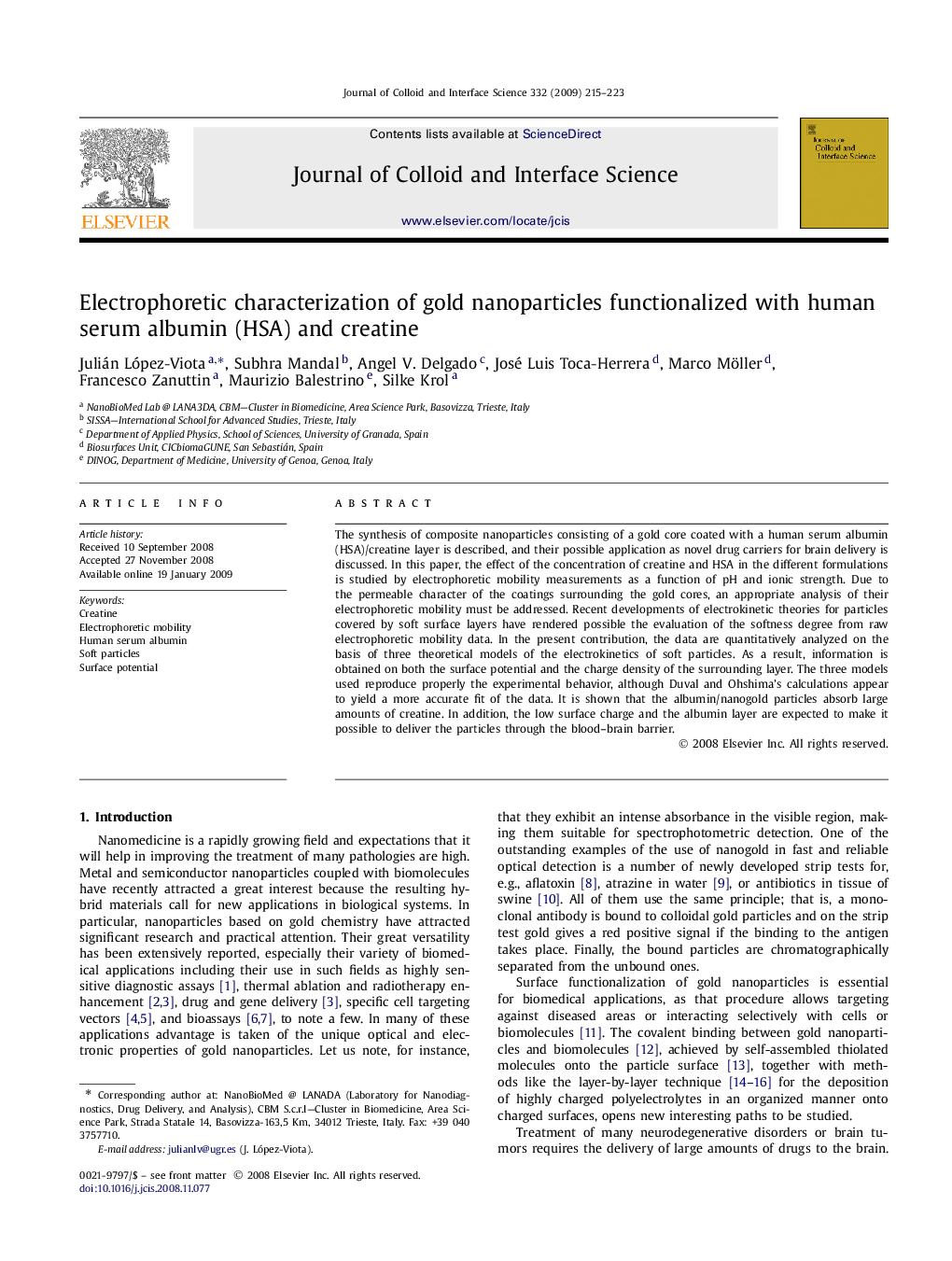| Article ID | Journal | Published Year | Pages | File Type |
|---|---|---|---|---|
| 610505 | Journal of Colloid and Interface Science | 2009 | 9 Pages |
The synthesis of composite nanoparticles consisting of a gold core coated with a human serum albumin (HSA)/creatine layer is described, and their possible application as novel drug carriers for brain delivery is discussed. In this paper, the effect of the concentration of creatine and HSA in the different formulations is studied by electrophoretic mobility measurements as a function of pH and ionic strength. Due to the permeable character of the coatings surrounding the gold cores, an appropriate analysis of their electrophoretic mobility must be addressed. Recent developments of electrokinetic theories for particles covered by soft surface layers have rendered possible the evaluation of the softness degree from raw electrophoretic mobility data. In the present contribution, the data are quantitatively analyzed on the basis of three theoretical models of the electrokinetics of soft particles. As a result, information is obtained on both the surface potential and the charge density of the surrounding layer. The three models used reproduce properly the experimental behavior, although Duval and Ohshima's calculations appear to yield a more accurate fit of the data. It is shown that the albumin/nanogold particles absorb large amounts of creatine. In addition, the low surface charge and the albumin layer are expected to make it possible to deliver the particles through the blood–brain barrier.
Graphical abstractTEM micrographs of gold nanoparticles: (a) citrate-stabilized, (b) creatine-coated with a negative stain, (c) overview of albumin/creatine–nanogold particles, (d) negatively stained albumin/creatine–nanogold particle.Figure optionsDownload full-size imageDownload as PowerPoint slide
